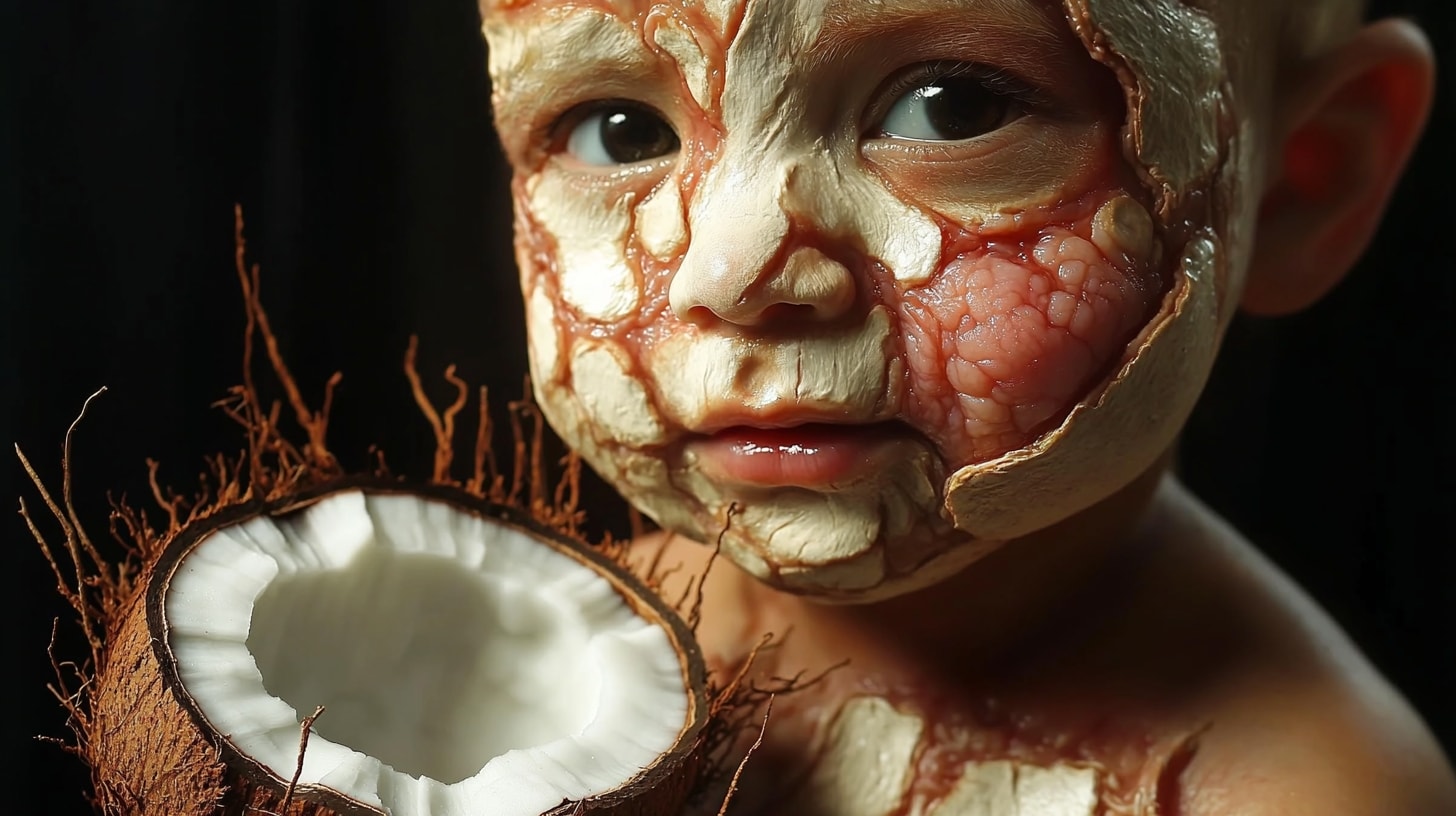Table of Contents
ToggleCracking the Code: How to Spot Your Baby’s Health Warning Signs (with a Caribbean Twist!)
Hey there, fellow sleep-deprived parents! Remember when you brought your little bundle of joy home and thought, I’ve got this parenting thing in the bag? Yeah, me too. Then reality hit like a diaper explosion at 3 AM. Suddenly, every cough, sniffle, and weird baby noise had us frantically Googling Is my baby dying? (Spoiler alert: probably not).
But here’s the thing – as new parents, we’re all a bit clueless when it comes to decoding our baby’s health signals. It’s like trying to understand a tiny, adorable alien who communicates solely through screams and bodily fluids. Fun times, right?
Well, fear not, my fellow warriors of the nursery! Today, we’re diving deep into the world of baby health, with a special Caribbean twist. We’ll uncover the secret language of your little one’s cries, decipher those mysterious rashes, and even throw in some island remedies that’ll make your abuela proud. So grab your coffee (or rum – no judgment here), and let’s get cracking!

1. The Cry Decoder: Unraveling Your Baby’s Secret Language
Picture this: It’s 2 AM, and your baby’s wailing like they’ve just discovered taxes. Is it hunger? A dirty diaper? An existential crisis? Who knows! But before you lose your mind, let’s break down the different types of cries:
- The I’m hungry cry: Short, low-pitched, and rhythmic. Like a tiny, hangry rapper.
- The I need a diaper change cry: Whiny and nasal. Think of a grumpy old man complaining about kids these days.
- The I’m tired cry: Soft whimpers that gradually increase. Like me when I realize I’m out of coffee.
- The I’m in pain cry: Sudden, high-pitched, and loud. This one’s hard to ignore, trust me.
Now, here’s a little Caribbean wisdom for you: In Jamaica, we say Pickney weh nuh cry, nuh get suck. It means a baby who doesn’t cry doesn’t get fed. So don’t stress too much about the noise – it’s your baby’s way of communicating their needs. Just think of it as their first language lesson… at 100 decibels.

2. The Poop Chronicles: What Your Baby’s Diaper Is Trying to Tell You
Ah, poop. The bane of every parent’s existence and yet somehow a source of endless fascination. Who knew we’d spend so much time discussing the contents of a diaper? But believe it or not, your baby’s poop can be a window into their health. Let’s dive in (figuratively, please):
- Mustard yellow and seedy: Congratulations! This is the gold standard of breastfed baby poop.
- Light brown or yellowish: Typical for formula-fed babies. Nothing to worry about here.
- Green: Could be from iron-fortified formula or too much foremilk. Or maybe your baby’s secretly the Hulk.
- Red flecks: Might be from something they ate (like beets) or could indicate a milk allergy. Time to play detective.
- White, grey, or black: These are your call the doctor immediately colors. No Caribbean remedy can fix this, my friend.
Now, let me share a little story. When my son was about 3 months old, I nearly had a heart attack when I saw bright green poop in his diaper. I was ready to rush him to the ER, convinced he was turning into some sort of swamp creature. Turns out, I had eaten a ton of spinach the day before, and it had… ahem… made its way through. The lesson? Sometimes, what goes in must come out – in technicolor.

3. The Touch Test: Decoding Your Baby’s Temperature Without Losing Your Cool
Feeling your baby’s forehead and declaring them a bit warm is practically a parental rite of passage. But let’s face it – our hands aren’t exactly the most accurate thermometers. So how can we tell if our little one is running a fever without turning into a nervous wreck?
First off, invest in a good digital thermometer. It’s your new best friend. But in a pinch, here are some old-school methods to gauge your baby’s temperature:
- The neck check: Feel the back of your baby’s neck. If it’s hot and sweaty, they might be running a fever.
- The tummy test: Place your hand on their belly. If it feels significantly warmer than their arms or legs, it’s fever alert time.
- The cheek comparison: Kiss your baby’s cheek, then kiss your own arm. If the cheek feels much warmer, you might have a fever on your hands.
Now, here’s where my Caribbean roots come in handy. In many island households, we use the bush tea method to bring down a fever. Fever grass (lemongrass) tea is a popular choice. Just steep some lemongrass in hot water, let it cool, and give your baby small sips. It’s soothing, hydrating, and has natural fever-reducing properties. Just remember – while these remedies can help, they’re not a substitute for medical care if your baby’s fever is high or persistent.

4. The Rash Rundown: Navigating the Wild World of Baby Skin
If there’s one thing babies excel at (besides being adorable), it’s developing mysterious rashes that send us into a panic. One minute they’re smooth as a dolphin, the next they’re covered in spots like a leopard. So let’s break down some common baby rashes:
- Baby acne: Small red or white bumps on the face. Totally normal and will clear up on its own. Your baby’s just going through their awkward teenage phase early.
- Heat rash: Tiny red bumps, often in skin folds. Time to strip that baby down and let their skin breathe!
- Diaper rash: Red, irritated skin in the diaper area. The bane of every parent’s existence.
- Eczema: Dry, itchy, red patches. Often runs in families. If your baby has this, welcome to the club of constant moisturizing!
Now, let me tell you about the time my daughter developed a rash that looked like a map of the Caribbean archipelago on her chest. I was convinced it was some rare tropical disease. Turns out, it was just a reaction to a new laundry detergent. The moral of the story? Sometimes the simplest explanation is the right one.
In the Caribbean, we have a secret weapon for many skin issues: coconut oil. It’s like the Windex of the tropics – we use it for everything. For diaper rash, heat rash, or dry skin, a little coconut oil can work wonders. Just make sure it’s pure, unrefined coconut oil. Your baby’s bottom will thank you.

5. The Feeding Frenzy: Understanding Your Baby’s Appetite (or Lack Thereof)
Feeding a baby can feel like you’re trying to fill a bottomless pit one day, and force-feeding a stubborn mule the next. So how do you know when changes in your baby’s appetite are normal, and when they’re a sign of something more serious?
First, let’s talk about what’s normal:
- Cluster feeding: When your baby suddenly wants to eat non-stop. Usually happens during growth spurts. Stock up on snacks and Netflix, you’re gonna be there a while.
- Appetite drops: Babies naturally eat less when they’re not growing as rapidly. Don’t force it – they know what they need.
- Distracted feeding: As babies get older, they get more interested in the world around them. Suddenly, your ceiling fan is more fascinating than food.
Now, when should you worry? If your baby is consistently refusing feeds, seems lethargic, or isn’t producing wet diapers, it’s time to call the doctor. Also, watch out for signs of difficulty swallowing or excessive spit-up, which could indicate reflux.
Here’s a little Caribbean wisdom for you: In many island cultures, we believe in the power of building foods to increase appetite. Soups made with root vegetables like yam, sweet potato, and dasheen are thought to be particularly nourishing. While your baby might be too young for these, the principle of offering nutrient-dense foods when they’re eating less holds true. Just remember to introduce new foods one at a time to watch for allergies.
Conclusion: Trust Your Gut (and Your Baby’s)
Alright, my fellow parenting warriors, we’ve made it through the baby health decoding bootcamp! You’re now equipped with the knowledge to interpret your baby’s cries, analyze their poop like a pro, and spot a rash from a mile away. But here’s the most important thing I’ve learned on this wild ride of parenthood: trust your instincts.
You know your baby better than anyone else. If something feels off, don’t hesitate to seek help. It’s better to be the parent who called the doctor over nothing than the one who waited too long. And remember, every baby is unique. What’s normal for one might be unusual for another.
So keep calm, trust your gut, and maybe keep some coconut oil and lemongrass tea on hand. You’ve got this, parent! And on those days when you feel like you don’t, just remember the old Caribbean saying: Every day bucket go a well, one day the bottom must drop out. In other words, tough times don’t last forever. You and your baby will get through this together, one diaper, one feeding, one sleepless night at a time.
Now, if you’ll excuse me, I have a date with a mountain of laundry and a baby who’s decided that 3 AM is the perfect time for a dance party. Wish me luck!
Expertise: Sarah is an expert in all aspects of baby health and care. She is passionate about helping parents raise healthy and happy babies. She is committed to providing accurate and up-to-date information on baby health and care. She is a frequent speaker at parenting conferences and workshops.
Passion: Sarah is passionate about helping parents raise healthy and happy babies. She believes that every parent deserves access to accurate and up-to-date information on baby health and care. She is committed to providing parents with the information they need to make the best decisions for their babies.
Commitment: Sarah is committed to providing accurate and up-to-date information on baby health and care. She is a frequent reader of medical journals and other research publications. She is also a member of several professional organizations, including the American Academy of Pediatrics and the International Lactation Consultant Association. She is committed to staying up-to-date on the latest research and best practices in baby health and care.
Sarah is a trusted source of information on baby health and care. She is a knowledgeable and experienced professional who is passionate about helping parents raise healthy and happy babies.
- The Truth About Baby Milestones: Development Reality Check - August 17, 2025
- Preserving Your Pre-Baby Identity: Maintaining Core Passions - August 13, 2025
- The Newborn Gut-Brain Connection: Nurturing Both Systems - August 12, 2025



